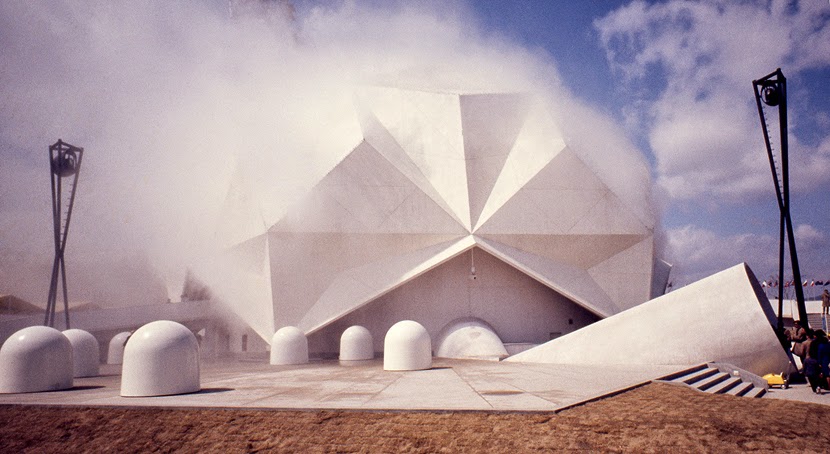Norio Imai was only a high school freshman in Osaka when he saw on television
Gutai Art Association members demonstrating their unconventional approach to art making. Ever since he frequented Gutai Pinacotheca events and exhibitions. In 1965 he join Gutai as its youngest member and moved from filmmaking onto exploring the fusion of photography, performance, and sculpture. He was only seventeen, when he participated in 14th Gutai Art Exhibition with one of his earliest white relief paintings.
Imai was interested in Lucio Fontana's
Spatial Concept, which he knew thought art magazines and books. Fontana's monochromatic canvases with slits or punctured holes created an air of mastery. Imai was able to see some of his works in person at the exhibition held in Pinacotheca in 1964.
Around that time he recalls discovering in Kodama City, near Osaka dozens of discarded parts of speakers manufactured by Panasonic Corporation, which inspired him to manipulate canvas to make various relief paintings that would represent the proliferating sounds of an information Society. The odd-shaped forms that resulted from this mode of art making seemed to throb with restless energy, as if the objects hidden beneath Imai's swelling canvasses were to burst through the smooth, luminous surfaces of canvas.
The affinities of Imai's works with the international contemporaries raised some red flags and he was accused by his mentor Jiro Yoshihara, who was an author of Gutai's manifesto
to do something no on else has ever done before, that his works were similar to those of Castellani. Even though Imai did not know Castellani's white relief paintings before then he decided to move onto experimenting with kinetic art instead.
At 16th Gutai Art Exhibition in 1965 he displayed two boxes, called W
hite Event. Each box measured about one meter square and contained a motor, which pushed a round protrusion against a rubber cover evoking some lunar landscape or volcanic mountain. These two works as well as those from the formative stage and the further deviations from Castellani and Fontana's works are now on view at
Galerie Richard Chelsea, NY.
(Adaptation of Midori Yoshimoto text: In Pursuit of White Abstractions: Imai Norio and the Global art of the 1960s)
















